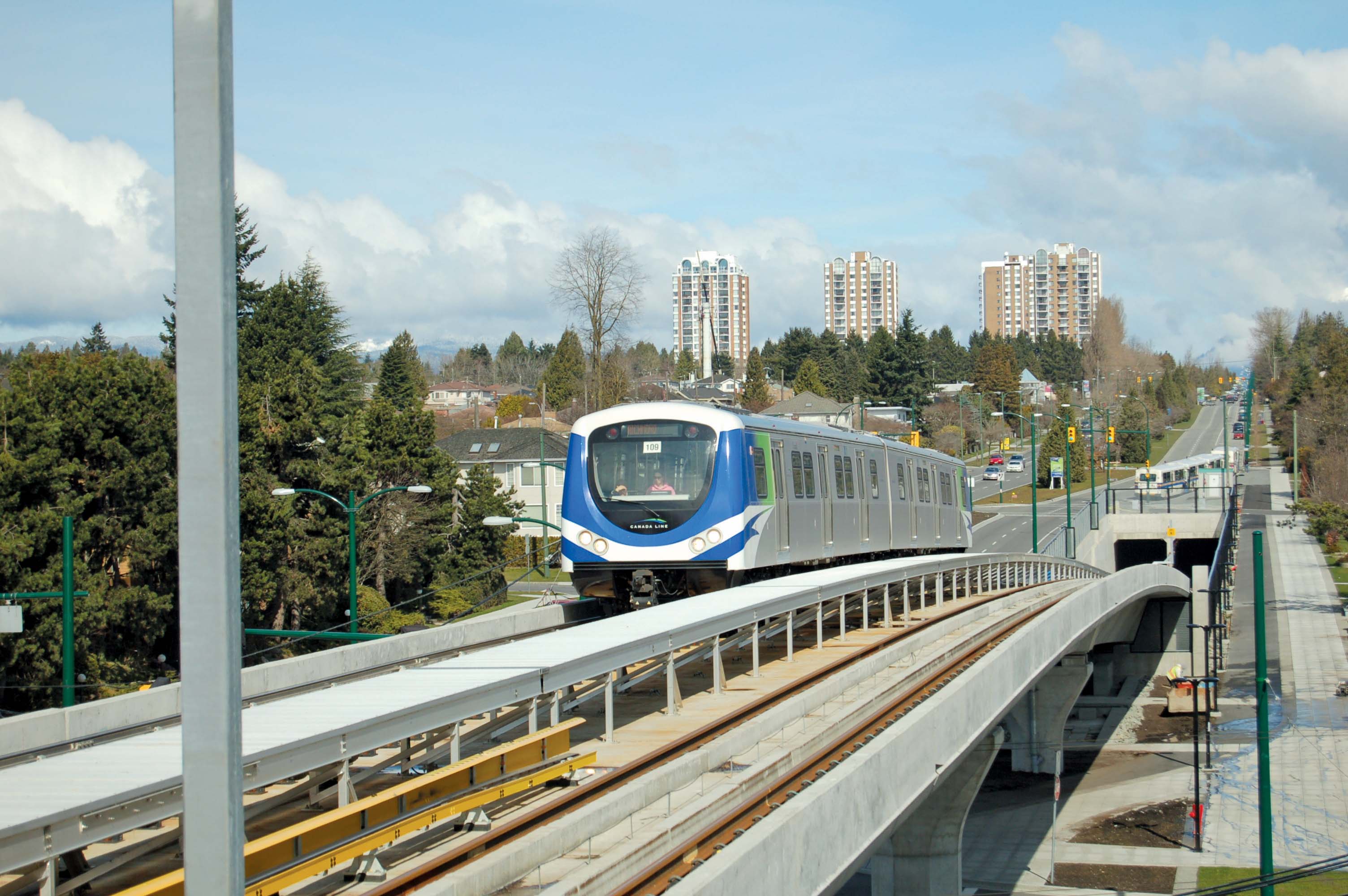
Developing the next generation of urban rail signalling solutions worldwide, with the emphasis on transit security and efficiency, is the goal of a recently-created business partnership between the government of the Canadian province of Ontario and
The main focus will be on the further development of the SelTrac communication-based train control (CBTC) system, designed for use across metros, and light and commuter rail networks. Introduced to enable computer-controlled trains to run driverless, this is already operational in Vancouver, on Canada's Pacific coast, as well as in Europe and Asia.
In the new deal Ontario, the country's most populous province and where almost half Canada’s R&D workforce is located, is investing up to CAN$12million (US$9.6 million) through its Jobs and Prosperity Fund, to cement the relationship. Brad Duguid, the province’s economic development, employment and infrastructure minister, told ITS International: "By providing this initial contribution, Ontario is leveraging a total investment of CAN$80.4 million (US$64.3 million).
“This is creating 126 new highly-skilled jobs as well as ensuring the retention of 963 at Thales’ existing Toronto base. The result will be the contribution of significant tax revenues to the province and the creation of spin-off jobs across the supply chain.”
Thales Canada president and CEO Mark Halinaty added: “Through this investment, we are demonstrating continued support for our Toronto presence. The province' backing is a key element in our decision to concentrate our R&D efforts in Ontario. The overall return will be a greater market share for Thales' CBTC systems across the world.”
The company plans to spend the money on upgrading its sector products, with a focus on improving transit safety and on sharpening its global competitive edge. The system can, for example, already support the sharing of tracks by more than one rail service operator, as it does in London and Hong Kong.
New signalling features being developed in Toronto are expected to optimise this capability and enable system deployment where track is shared with non CBTC-equipped traffic. The work is progressing as part of a programme of transit-based research collaborations with three Ontario academic institutions, the University of Toronto, York University and McMaster University.
For communication between trains and the rail infrastructure, CBTC uses a specially-developed frequency-hopping radio system. This operates within the same frequency range as conventional Wi-Fi, but is designed to offer greater resistance to interference and noise – hence its extensive military deployment. The rail version incorporates additional encryption and authentication protection.
Within Ontario, CBTC has the capability to upgrade existing services in the Greater Toronto Area. The main regional transit operator
One relevant factor could be the outcome of a long-running political debate on the desirability of integrating all of the Greater Toronto Area's rail transit services more closely into a single, conurbation-wide operation. This would follow the pattern of agencies such as Boston's Massachusetts Bay Transportation Authority and Chicago's Regional Transit Authority in the neighbouring US.
Halinaty continued: “As CBTC can typically allow at least a 30% improvement in passenger carrying capacity on existing systems, without the need to invest in additional infrastructure, there is a significant financial benefit for transit authorities. Again, as it will enable more frequent services along the same track, it can provide the additional financial gain of a larger ridership base for operators.
“In terms of reliability, it is designed to recover quickly from disturbances that can lead to delays by regulating all trains in a network system-wide to even out any resulting service bunching.”
The association between Ontario and the company has its origins in the 1970s, at the time of a major policy shift - in the province' approach to coping with Toronto's suburban sprawl - away from a previous emphasis on road building and in the direction of public transit.
This crystallised in the 1971 cancellation of further work on the city's already part-built Spadina Expressway. The route was originally proposed as a new fast road link between the north of the city and its downtown area - with plans for a metro rail link to run in the median of the project's right of way. But, following huge public protests, the extension was halted by the Ontario provincial government which was responsible for approving capital borrowing.
Speaking in the Ontario Legislature, then premier Bill Davis said: “If we are building a transportation system to serve the automobile, the Spadina Expressway would be a good place to start. But if we are building a transportation system to serve people, it is a good place to stop.” The provincial government did, however, approve the first stage of the proposed Spadina metro line, with a further (underground) stretch due to follow the approximate route designated for the road extension. But the cancellation signalled the end of expressway network construction in the city, with other proposals being abandoned, in favour of a fresh emphasis on public transit and the technology needed to make it more efficient.
In 1972 a new Ministry of Transportation and Communications (later the Ministry of Transportation) was created with a brief that encompassed the development of modern urban transit systems in parallel with those that were already under way in the US. The following year, the Ontario government set up an Urban Transportation Development Corporation with a brief to establish the province as a centre of transportation excellence.
September 1978 saw the opening of an engineering centre for the corporation, whose rail signalling business became part of Thales in 2006, with a 1.9km oval test track, on the site of a defunct locomotive manufacturing company at Kingston, 265km east of Toronto. In 1981, a small group of the corporation's engineers (later Thales employees) fired up some prototype trains there to test the first version of an intermediate capacity transit system.
Designed to cater for ridership levels midway between those of metros and buses or streetcars, 1985 saw the first deployed on Toronto's Scarborough rapid transit link which has evolved into today's CBTC. This introduced the moving (as opposed to static) block signalling system in which computers defining safe zones around the moving trains – for which continuous, real-time train-infrastructure communication is obviously vital – and in doing so deliver greater line capacity. Moving block signalling is now an integral element in the EU-backed European Rail Traffic Management System, which aims to achieve cross-border interoperability.
In 1986, the Expo 86 World Fair opened in Vancouver, with transportation as its theme. The provincial government of British Columbia had long since decided to mark the event by having the city open a modern rail transit route and, following an approach from the Ontario government, agreed to install CBTC on the planned Expo Line, the initial route in what was to become the SkyTrain network.
This made the city the first in the world to run driverless trains. There followed the CBTC-based Canada Line, built in time for the 2010 Winter Olympics, which succeeded in running at 118% of capacity at times of peak demand. In 2013, Thales won a further contract to install CBTC on Vancouver's new Evergreen light rapid line, which is due to come into service in early 2017.
Back in Ontario, in a further boost for innovation in the transport sector, the provincial government has recently announced, as part of its Business Growth Initiative, a CAN$10 million (US$8 million) grant to the Canadian Urban Transit Research and Innovation Consortium. Both Metrolinx and Thales are among its supporters.
Incorporated in 2014 to back industry-academic collaboration in developing and commercialising next-generation technologies for rail- and road-based transit across the country, the consortium is currently engaged in projects including a study for a Pan-Ontario electric bus demonstration and integration trial.
- About the Author: David Crawford has spent 20 years writing about and researching ITS and is a Contributing Editor to ITS International.






